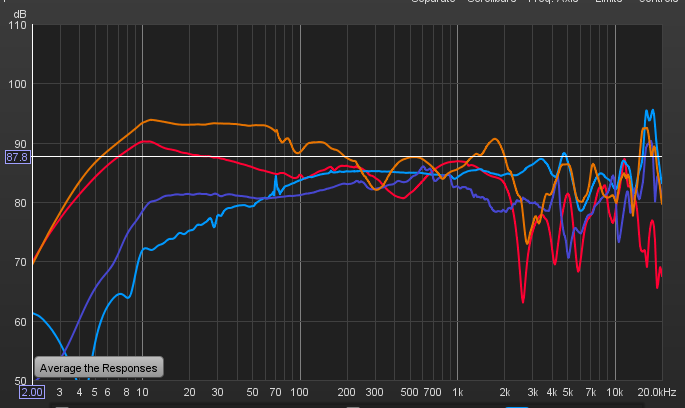castleofargh
Sound Science Forum Moderator
- Joined
- Jul 2, 2011
- Posts
- 10,479
- Likes
- 6,115
a few things to define before attempting to conclude anything:So just as a sanity check, I did some manual tone sweeps with my most bass-capable headphones and a few others for contrast.
I am definitely able to hear/feel tones down to about 8-9hz (and up to about 16.5kHz)
Interestingly, most of my headphones and even IEMs had severe roll-off or simply cut off altogether around 18-20hz.
Two of my headphones in particular with stunning bass capabilities could produce pulsating sensations or tones 'audibly' down to 10hz, but below that needed an increase in volume to compensate for natural transducer roll-off.
I could 'feel' these pulsations down to 4-5 hz quite vividly, but below that it's difficult to know if they are tonal vibrations or just the transducer crapping out at the lowest extremes, so for arguments sake we can ignore everything below 5hz.
So I am starting to strongly suspect that either the 'accepted standard' of human hearing starting at 20hz is somewhat grossly inaccurate and needs updating, or I am an outlier of the norm and have highly sensitive bass hearing.
... or perhaps some of these so-called 'hearing tests' are done with inappropriate transducers that are simply not up to the job.
Interesting either way it leans, there's still so much we don't know about audio and hearing. As a science, it's in it's infancy in comparison to others.
- what do we define as hearing? everybody can feel his lungs shaking from some strong sub frequency rumble, or totally perceive a earthquake moving the ground at the frequency of a few hertz. but does that count as hearing? in my opinion it doesn't. I'm not trying to reject the fact that we experience something and that it's related to sound or sub frequencies, I'm just saying that to me hearing has to do with ears. it's a way of clearly defining what I'm talking about, more than an argument about reality.
- are your "tests" ensuring that when you're hearing or feeling something, it's effectively the frequency you're sending as a tone and not a side effect of that signal?
mega warning 3000 /!\ I have neither the right equipment nor the proper knowledge required to know that I've measured this properly!!!!!!!! but I couldn't find a clear example on the web with an IEM so I made one ^_^.

here we're looking at a tone of 18.3Hz being played in my er4sr(not exactly the bass heavy IEM^_^) so that the output would be a little below 95dB SPL at that frequency. first thing I have to say, is that this is louder than I ever listen to music. at this setting the 3kHz area would be like 20dB higher, so it's loud but still a value we consider when thinking about driving our gears and looking for the right amplifier.
the numbers show the harmonics created by the IEM when playing that 18.3Hz tone that loud. so 2 is 18.3X2=36.6Hz 3 is at 18.3*3=54.9Hz etc.
you can read in the little window that the 2nd harmonic reaches 1.69% and 3rd 2.29%. which is pretty high for IEMs because the tone is loud. at more reasonable levels that I usually use to do my frequency response and THD graphs I'd be around 1% THD for the 18Hz tone on that IEM. but for some full size headphones or speakers/subs, being well above 1% THD at such frequency is absolutely normal. I'm just saying this to try and put things into perceptive for those not familiar with harmonic distortions. as for the cause, well it's simply that the driver for various reasons will not move following exactly the amplitude variation of the sine wave(small differences in amplitude and/or phase due to; air resistance, the driver trying to retract to its resting position, previous air waves still bouncing around in the area, etc), and that will effectively mean the creation of new frequencies.(which is more obvious when we know that any signal can be decomposed as sums of sines. then any shape that's not a pure sine is going to be that sine wave plus some other sines, math says so).
so back to our numbers and what they actually mean. the third harmonic is in this particular case the loudest frequency after our original test tone of 18.3Hz, and 2.29% distortion is a weirdo way of saying that it is 33dB quieter than the original tone. so here let's round up the all thing and say that I'm getting a 60dB SPL 54.9Hz sound(among others, but that one is loud and something everybody in a reasonably quiet room could notice). it comes out of my IEM despite how I only sent a 18.3Hz tone into it. and by now I hope it's clear that hearing something doesn't necessarily mean hearing the initial frequency, as several others may also reach audible levels.
this is only one of the possible explanations I mentioned last time, but this post is already way too long so I'll stop there ^_^.















